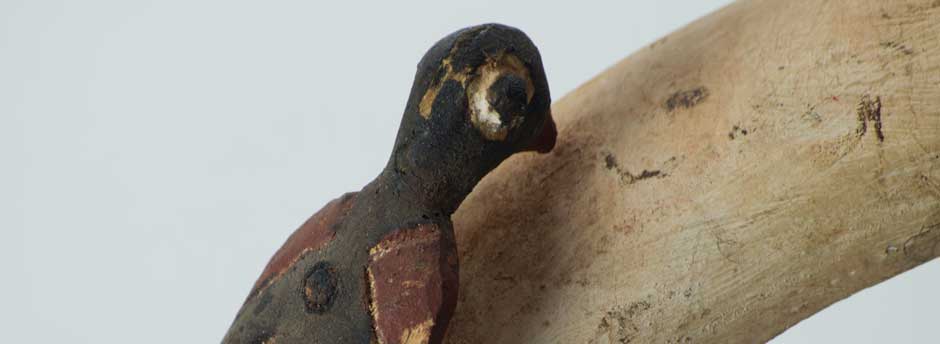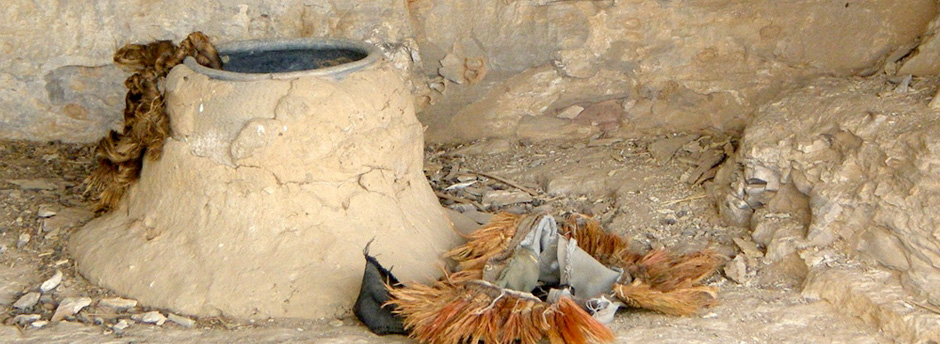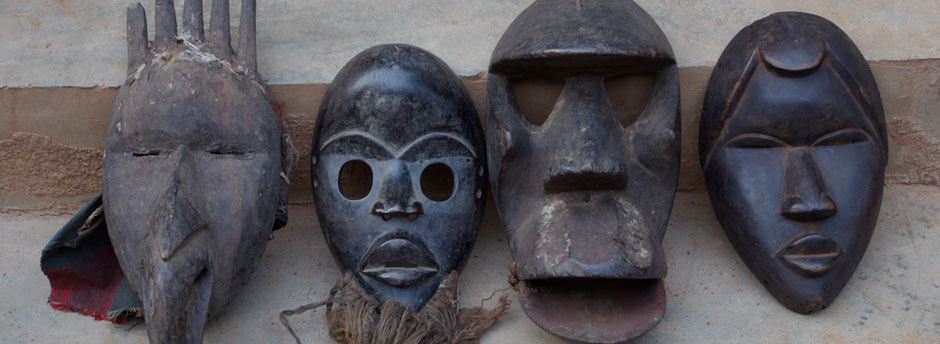The dan
The Dan occupy the western part of the Ivory Coast, a region of mountains and wooded savanna, as well as adjacent regions of Liberia; the language they speak is derived from Mande.
>> The Dan live essentially in villages that are organized in patrilineal lineage groups; Children live with their fathers and marriage prohibits unions between cousins in both the maternal and paternal lines.
>> Ivory Coast through its history of the slave trade as well as the colonial division of the territory has been fragmented, and as a result, so have been its peoples. The Guerze, the Kono, the Manon, the Gio, the Geh, the Kra and the Dan use masks stylistically called “Dan” masks.
As a result there are stylistic variations to these sub-styles from which three types of masks emerge: the Dan, the Gwere-Webe and the Guerze.
>> The face-mask is central to preserving supernatural as well as social functions. Upon the masked dancer’s appearance the spectators’ reaction will provoke a reaction and this in turn will define the identity of the mask as the name attributed is inspired by the posture of the dancer within the circumstances of its first appearance.
>> Dan masks are characterized by a concave and almost abstract yet realistic face, the chin is pointed, mouth is upturned and full and the rounded forehead is generous – all are desired female facial features and attributes.
>> There are approximately a dozen different types of Dan masks each serving a particular function and role: the Dean’Gle, the Tanka’Gle, the Gunyeyae, the Zakpai, the Ba’Gle, the Bu’Gle, the Kao’Gle, the Du’Gle, the Gagon, the Glewa, the GoGe are amongst them.
>> During the rites of the secret societies reserved exclusively for men, a small form of the larger mask known as the passport mask may be sewn onto a piece of cloth and kept in a pouch or may be worn hidden from onlookers around the waist.
>> The Dan are also known for their statuary, however very few examples exist as these were expressly commissioned by influential village chiefs as faithful portraiture of their preferred spouse carrying her baby on her back. These statues served as maternity figures and were taken out of their secret hiding place only upon the visits of notable dignitaries.




 1
1 2
2 3
3